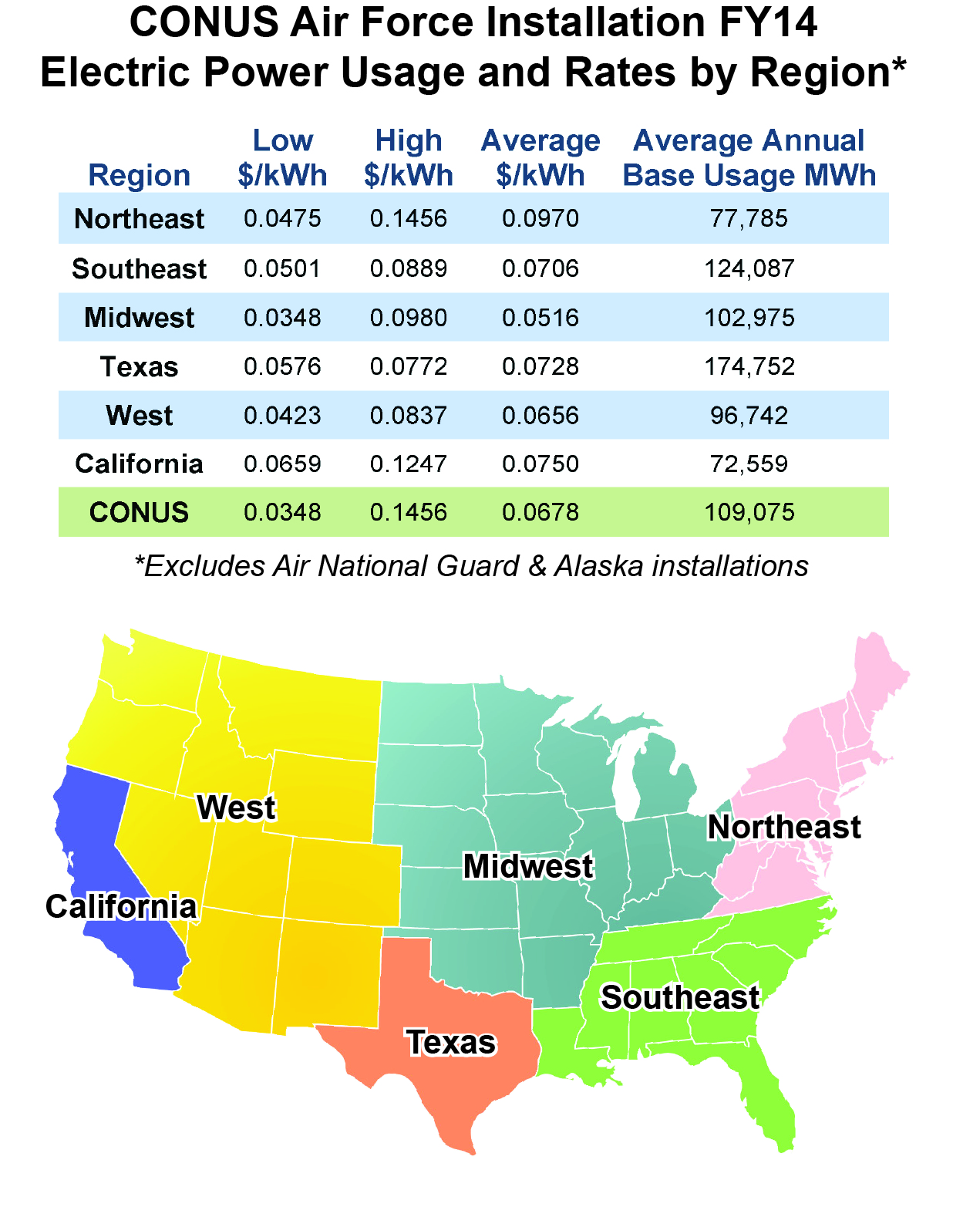The Air Force is the Department of Defense leader in renewable energy investment. The Air Force Civil Engineer Center evaluates renewable energy (RE) ideas across the Air Force. The RE team at AFCEC continually evaluates renewable resources worldwide and implements projects where viable. AFCEC has implemented a very rigorous process to evaluate the viability of RE technologies and fields projects that have economic benefit. However, in many locations the economics do not support RE development, as power can be purchased from the local utility at a lower rate and/or lifecycle cost. Solar, wind, biomass and other RE technologies are not cost effective in many locations due to the high capital costs of renewable system components, the lack of supporting infrastructure and environmental restrictions limiting development.
To assist energy companies with determining where RE projects are potentially most cost effective, the Air Force has calculated general pricing figures, or blended rates, for electric purchases by regions of the country. Complete pricing analysis may require the addition of transmission/delivery, standby and/or departing load charges. In general, the Air Force blended rate for electric power purchases ranges from $0.034/kWh to $0.16/kWh averaging $0.066/kWh at Air Force installations across the lower 48 states. This information excludes Air National Guard installations.
The table shows by region the electric power rates and average annual electricity use per installation. For a printable version that includes a map, click
here.
